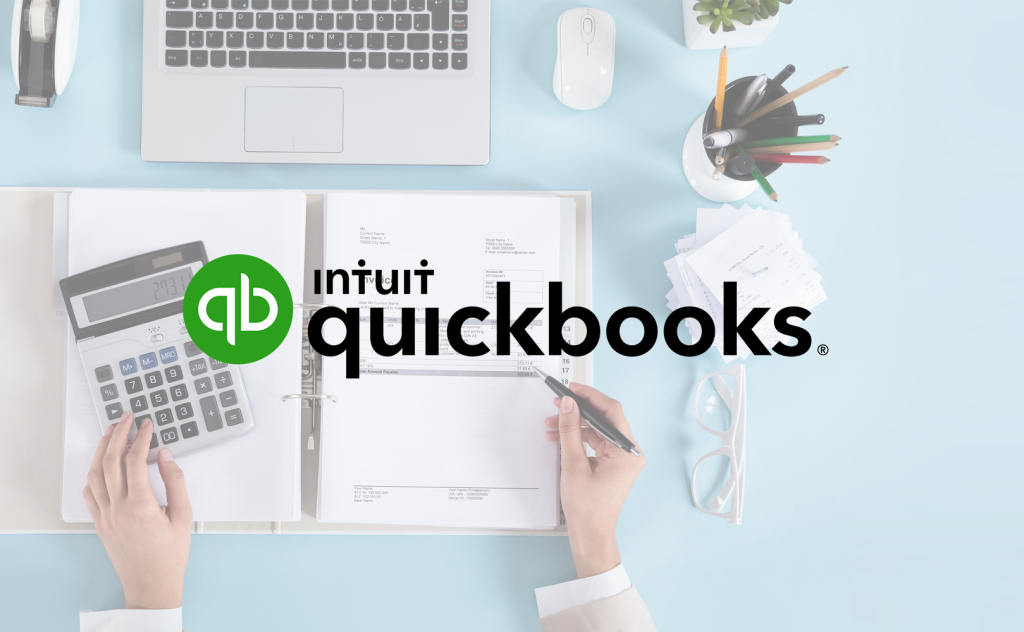Basic Accounting and Bookkeeping
Basic Accounting and Bookkeeping
In this course you will learn the fundamentals of bookkeeping, such as the ledger, the cash book, and sales and purchases. You’ll explore double entry book-keeping and trial balances, before going on to learn about the journal, bank accounts and balance sheets.
£179.99 Original price was: £179.99.£19.99Current price is: £19.99.
£179.99 Original price was: £179.99.£19.99Current price is: £19.99.
Why Choose Us?
- Unlimited lifetime access
- Access anywhere, any time, wherever you have an internet connection
- Fast effective training, written and designed by industry experts
- Track your progress with our Learning Management System
- Unlimited customer and student support
- Save money, time and travel costs
- Learn at your own pace and leisure
- Easier to retain knowledge and revise topics than traditional methods
- Exam preparation quizzes, tests and mock exams to ensure that you are 100% ready
Description
A closer look…
Using online learning the course takes you through the process from First Principles and Core Concepts to Final Accounts, giving you an in-depth knowledge and set of skills which will make you an asset in any business while allowing you to study at your own pace in your own time. This course will create a strong foundation for any further education into accounting and chartered accounting, or learning the basics before jumping into the world of Sage.
Career & Job Opportunities
Basic Accounting and Bookkeeping enjoys lucrative career paths for a variety of high demand and vibrant accounting roles. Below is a short list of the range of career opportunities offered to VCPs:
- Cashier / Clerical Assistant ;
- Accounts Clerk ;
- Payroll Administrator ;
- Ledger Clerk ;
- Accounts Supervisor ;
- Accounts Manager ;
The salaries of the jobs listed above range from £18,500pa to £37,500pa with more than 81% being offered a salary of more than £24,700pa.
Modules
Module 1 Chapter 1: Accounting Introduction
Unit 1 1.1.1 Introduction – Course Introduction
Unit 2 1.1.2 Introduction – Income Tax and Accounting Rules
Unit 3 1.1.3 Introduction – The Accounting Department
Unit 4 1.1.4 Introduction – Bookkeeping and Accounting Tutorial
Unit 5 1.2.1 The Basic Accounting System – Overview of the Accounting System
Unit 6 1.2.2 The Basic Accounting System – Transferring to the Books of Prime Entry
Unit 7 1.2.3 The Basic Accounting System – Transferring to Ledger Accounts
Unit 8 1.2.4 The Basic Accounting System – Ledger Accounts
Unit 9 1.2.5 The Basic Accounting System – Trial Balance
Unit 10 1.2.6 The Basic Accounting System – Touching on financial statements
Module 2 Chapter 2: Sales Documentation and The Accounting Equation
Unit 1 2.1.1 Financial Documents for Sales – Introduction
Unit 2 2.1.2 Financial Documents for Sales – Financial documents
Unit 3 2.1.3 Financial Documents for Sales – Flow of documents
Unit 4 2.1.4 Financial Documents for Sales – Invoice summary
Unit 5 2.1.5 Financial Documents for Sales – Discounts and VAT
Unit 6 2.1.6 Financial Documents for Sales – Checking invoices
Unit 7 2.1.7 Financial Documents for Sales – Credit Notes and Statements
Unit 8 2.1.8 Financial Documents for Sales – Coding and Filing
Unit 9 2.2.1 The Accounting Equation and Double Entry – Introduction to double entry
Unit 10 2.2.2 The Accounting Equation and Double Entry – Bank accounts
Unit 11 2.2.3 The Accounting Equation and Double Entry – Writing up a double entry account
Unit 12 2.2.4 The Accounting Equation and Double Entry – Debits and credits
Unit 13 2.2.5 The Accounting Equation and Double Entry – Double-entry and the accounting equation
Unit 14 2.2.6 The Accounting Equation and Double Entry – Balancing Accounts
Module 3 Chapter 3: Customers and Suppliers
Unit 1 3.1.1 Processing payments from customers – Introduction
Unit 2 3.1.2 Processing payments from customers – Remittance Advice
Unit 3 3.1.3 Processing payments from customers – Discrepancies
Unit 4 3.2.1 Processing documents from suppliers – Introduction
Unit 5 3.2.2 Processing documents from suppliers – Ordering Procedure
Unit 6 3.2.3 Processing documents from suppliers – Purchase order
Unit 7 3.2.4 Processing documents from suppliers – Delivery note
Unit 8 3.2.5 Processing documents from suppliers – Goods received note
Unit 9 3.2.6 Processing documents from suppliers – Purchase invoice
Unit 10 3.2.7 Processing documents from suppliers – Checking financial documents
Unit 11 3.2.8 Processing documents from suppliers – Checking invoice calculations
Unit 12 3.2.9 Processing documents from suppliers – Coding Credit notes and Purchases invoices
Unit 13 3.3.1 Preparing payments to suppliers – Introduction
Unit 14 3.3.2 Preparing payments to suppliers – Reconciling the supplier statement of account
Unit 15 3.3.3 Preparing payments to suppliers – Dealing with discrepancies
Unit 16 3.3.4 Preparing payments to suppliers – Disputed invoices and invoice authorisation
Unit 17 3.3.5 Preparing payments to suppliers – Preparing remittance advices
Module 4 Chapter 4: Sales, Purchases and Returns
Unit 1 4.1.1 Sales and sales returns accounting – Introduction
Unit 2 4.1.2 Sales and sales returns accounting – Credit sales and sales returns
Unit 3 4.1.3 Sales and sales returns accounting – Books of prime entry
Unit 4 4.1.4 Sales and sales returns accounting – General ledger and sales ledger
Unit 5 4.1.5 Sales and sales returns accounting – Accounting system and bookkeeping for credit sale
Unit 6 4.1.6 Sales and sales returns accounting – Accounting system and bookkeeping for sales returns
Unit 7 4.1.7 Sales and sales returns accounting – Analysed sales day books
Unit 8 4.2.1 Purchase returns accounting – Introduction
Unit 9 4.2.2 Purchase returns accounting – Credit purchases and returns
Unit 10 4.2.3 Purchase returns accounting – Accounting system for credit purchases
Unit 11 4.2.4 Purchase returns accounting – Purchases day book and bookkeeping for credit sales
Unit 12 4.2.5 Purchase returns accounting – Accounting system for purchases returns
Unit 13 4.2.6 Purchase returns accounting – Purchases returns day book and bookkeeping for purchases returns
Unit 14 4.2.7 Purchase returns accounting – Analysed purchases day book
Module 5 Chapter 5: Cash Books
Unit 1 5.1.1 Three column cash book – Introduction
Unit 2 5.1.2 Three column cash book – What the cash book is used for
Unit 3 5.1.3 Three column cash book – Three column cash book layout
Unit 4 5.1.4 Three column cash book – Cash book to the double-entry system
Unit 5 5.1.5 Three column cash book – Balancing the cash book
Unit 6 5.1.6 Three column cash book – Cash book to Ledger
Unit 7 5.2.1 Analysed cash book – Introduction
Unit 8 5.2.2 Analysed cash book – Case study
Unit 9 5.2.3 Analysed cash book – Transferring from analysed cash book to ledger
Unit 10 5.2.4 Analysed cash book – Dishonoured cheques
Unit 11 5.2.5 Analysed cash book – The cash book in the accounting system
Unit 12 5.2.6 Analysed cash book – Bank and cash control accounts
Unit 13 5.2.6 Analysed cash book – Checking the cash book
Unit 14 5.3.1 Petty cash book – Introduction
Unit 15 5.3.2 Petty cash book – What the petty cash book is used for
Unit 16 5.3.3 Petty cash book – The imprest system and petty cash vouchers
Unit 17 5.3.4 Petty cash book – Petty cash book layout
Unit 18 5.3.5 Petty cash book – VAT and petty cash
Unit 19 5.3.6 Petty cash book – Balances and transferring the analysis columns
Unit 20 5.3.7 Petty cash book – Restoring the cash float and control of petty cash
Unit 21 5.3.8 Petty cash book – Checking the cash
Unit 22 5.3.9 Petty cash book – Petty cash book in the accounting system
Unit 23 5.3.10 Petty cash book -. Petty cash control account
Module 6 Chapter 6: Trial Balance
Unit 1 6.1.1 The initial trial balance – Introduction
Unit 2 6.1.2 The initial trial balance – Initial trial balance preparation
Unit 3 6.1.3 The initial trial balance -Guidelines for credit and debit balances
Unit 4 6.1.4 The initial trial balance – Unbalanced trial balance
Unit 5 6.1.5 The initial trial balance – Capital and revenue Income and expenditure
Related products
- Add to basket
-
Sale!Add to basket
Ultimate Intuit® QuickBooks® Bundle: 2020 Edition
£239.99Original price was: £239.99.£35.99Current price is: £35.99. - Add to basket
- Add to basket




